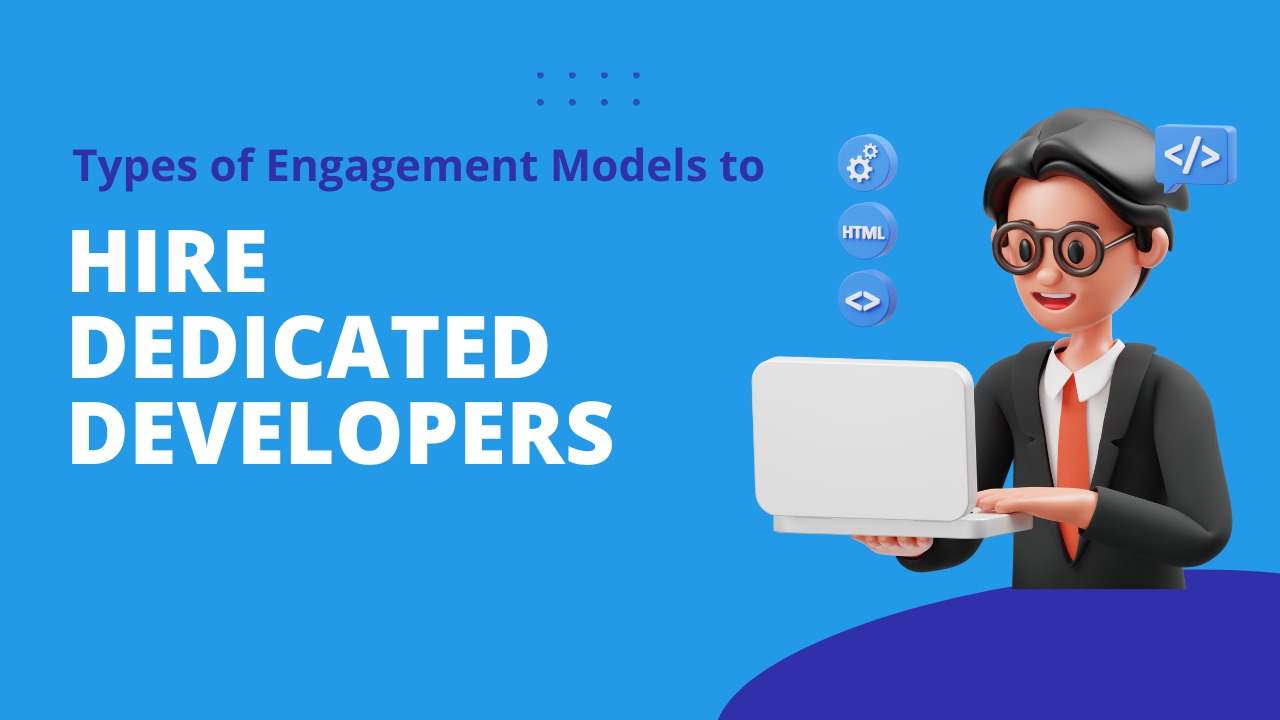As businesses increasingly embrace digital transformation, the need for skilled developers to build, maintain, and enhance digital platforms is greater than ever. Whether you’re launching a mobile app, website, or enterprise software, finding the right development team is critical. However, selecting the ideal engagement model to hire dedicated developers is equally important.
In this article, we’ll explore the different types of engagement models available to businesses, focusing on how to hire remote developers and dedicated teams. This guide will help you understand which model best fits your project requirements, timeline, and budget.
What Is an Engagement Model?
An engagement model refers to the framework or structure that defines the working relationship between the client (you) and the development team. The choice of an engagement model impacts the scope of work, costs, flexibility, and level of involvement needed in a project.
These models are designed to suit different project types, such as short-term assignments, long-term partnerships, or highly specialized tasks. By choosing the right engagement model, businesses can optimize efficiency, reduce costs, and gain a competitive advantage in the development process.
Common Types of Engagement Models
Here are the most common engagement models you can choose from when looking to hire dedicated developers or remote developers:
1. Dedicated Development Team Model
The Dedicated Development Team model is one of the most popular options for businesses that require long-term collaboration. In this model, you essentially “rent” a team of developers that exclusively works on your project.
Benefits:
- Control & Flexibility: You have full control over the project and direct communication with your team.
- Long-term Focus: Best suited for ongoing projects where continuous updates and improvements are needed.
- Scalability: Teams can scale up or down based on the project’s evolving needs.
When to Use:
- When your project requires dedicated resources for an extended period.
- When you need a team that deeply understands your business and objectives.
This model works well for companies that want to hire remote developers but need them to become an integral part of the internal team.
2. Fixed-Price Model
The Fixed-Price model is ideal for projects with a clearly defined scope, timeline, and budget. Both the client and the development team agree on a fixed cost before the project begins, which doesn’t change unless the project scope changes.
Benefits:
- Predictable Costs: No surprises in terms of additional expenses.
- Clear Deliverables: All features, functionalities, and milestones are predetermined.
- Low Risk: Because everything is predefined, risks related to delays or budget overruns are minimal.
When to Use:
- For small to medium-sized projects where the requirements are clearly outlined.
- For projects with a short timeline, such as an MVP (Minimum Viable Product) or small application.
While it offers clear advantages, the fixed-price model might not be ideal for complex or evolving projects, where changes are expected over time.
3. Time and Material Model
In the Time and Material (T&M) model, clients are billed based on the actual time and resources the development team spends on the project. This is a flexible approach that adapts to changing project requirements.
Benefits:
- Adaptability: Ideal for projects where scope and requirements are not fully defined at the start.
- Transparency: You pay for the actual hours worked, giving you clear visibility into how much time is being invested.
- Agile-friendly: This model supports agile methodologies, allowing for iterative changes and improvements.
When to Use:
- For complex or long-term projects that are expected to evolve.
- When you need to make frequent changes to the scope and require continuous feedback loops.
The T&M model works well when you want to hire remote developers who can provide ongoing updates and adjustments based on user feedback or market changes.
4. Hybrid Model
The Hybrid engagement model is a combination of both the Fixed-Price and Time and Material models. In this approach, some aspects of the project (like milestones) are defined with fixed costs, while others are billed based on time and material.
Benefits:
- Best of Both Worlds: Allows for some flexibility in dynamic parts of the project while keeping other parts strictly defined.
- Optimized Cost Management: You can have a balance between budget predictability and flexibility.
- Tailored Approach: Especially useful for businesses that have a defined scope for part of the project but want flexibility in other areas.
When to Use:
- For medium to large projects where some features can be defined upfront, while others need to remain adaptable.
This model is especially useful when working with dedicated developers who need to handle various types of tasks with different levels of complexity.
5. Staff Augmentation Model
The Staff Augmentation model involves adding skilled developers to your existing in-house team. This can be a cost-effective way to scale your workforce without the hassle of full-time hiring.
Benefits:
- Resource Flexibility: You can bring in developers with specialized skills as needed.
- Quick Turnaround: Developers can be hired quickly to meet project demands.
- Cost-Effective: Avoids long-term commitments to full-time employees while filling temporary skill gaps.
When to Use:
- When you need to scale your team for a specific project or timeline.
- When your in-house team lacks specific expertise for a part of the project.
Staff augmentation is a common choice for companies looking to hire dedicated developers or hire remote developers temporarily for specialized tasks.
How to Choose the Right Engagement Model
Selecting the right engagement model depends on several factors, such as project size, budget, timeline, and how involved you want to be. Here are a few considerations to guide your decision:
1. Project Scope and Requirements
If your project has a clearly defined scope and features, a Fixed-Price model may be ideal. On the other hand, if the project scope is likely to evolve, the Time and Material or Dedicated Development Team models may offer the flexibility you need.
2. Budget Constraints
For businesses with a fixed budget, the Fixed-Price model provides the advantage of cost predictability. However, for projects that require flexibility and adaptability, the Time and Material model allows you to pay based on actual work done.
3. Involvement Level
If you prefer to have a high level of control over the project and work closely with the team, the Dedicated Development Team or Staff Augmentation models offer the most involvement. These models allow you to work with developers as an extension of your team, even if they are remote.
4. Timeline
If your project is under a strict deadline, a Fixed-Price model may ensure timely delivery. However, for long-term projects or those with uncertain timelines, the Dedicated Development Team model might provide better adaptability.
Conclusion
Choosing the right engagement model is crucial when looking to hire dedicated developers or hire remote developers. Each model offers unique benefits, so understanding your project needs is essential to make the best choice. Whether it’s the flexibility of the Time and Material model, the cost efficiency of the Fixed-Price model, or the long-term partnership of a Dedicated Development Team, your decision will significantly impact the success of your project.
Evaluate your business objectives, budget, and involvement level to pick the engagement model that fits your development needs best.
FAQs
1. What is the best engagement model for a startup? For startups, the Dedicated Development Team or Time and Material models are often the best options, as they offer flexibility and adaptability as the business grows.
2. Is it better to hire remote developers or in-house developers? It depends on your project’s needs. Hiring remote developers offers more flexibility and cost savings, especially if you’re working on a short-term or specialized project.
3. Can I switch engagement models midway through a project? Yes, depending on the contract terms, you can switch engagement models if the current one no longer fits your project needs.
4. How do I ensure the security of my project with remote developers? To ensure security, establish clear guidelines in your contract, use secure communication tools, and consider signing an NDA (Non-Disclosure Agreement) with your developers.




